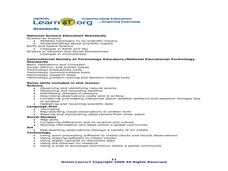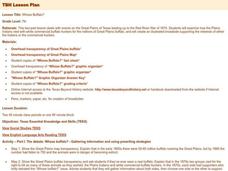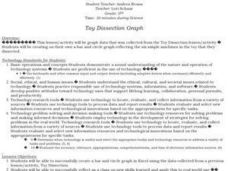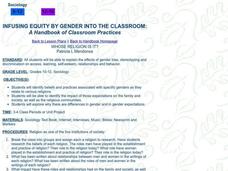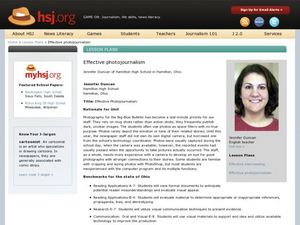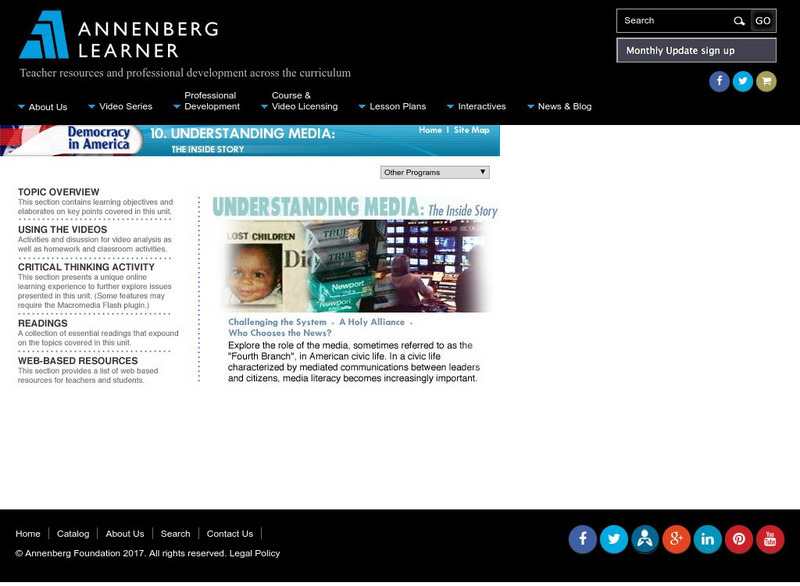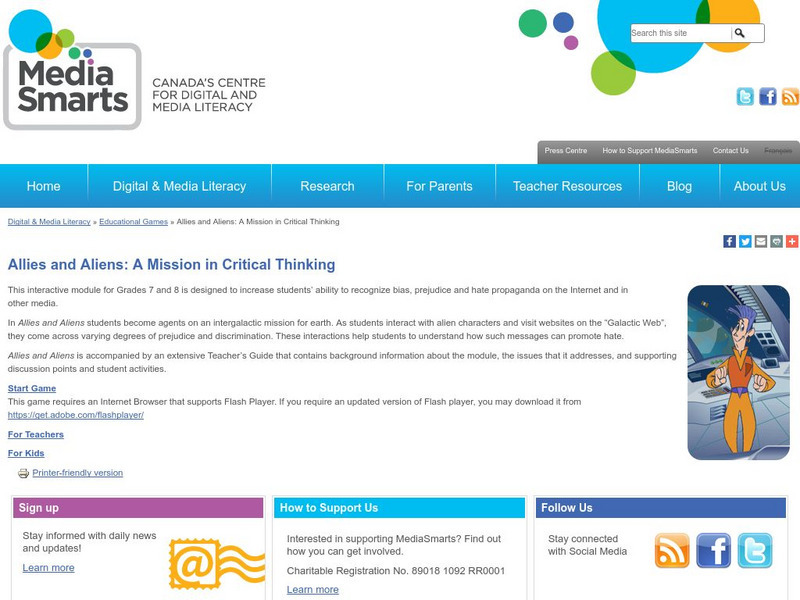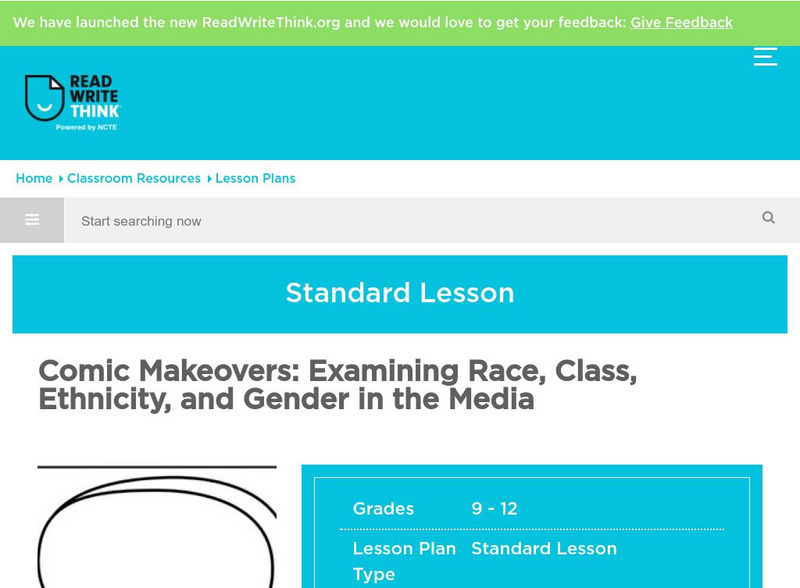Curated OER
Bill of Rights -- Texas v. Johnson, 1989
Students examine the First Amendment of the Bill of Rights. During a visit to the George Bush Presidential Museum, they watch a video about the Texas v. Johnson flag burning case. In groups, they discover the role of the Supreme Court...
Curated OER
The Study of the Spanish-Speaking People of Texas: Understanding Primary Sources
Students analyze Russell Lee's photo essay as a sign of segregation in Texas. They consider the differences between primary and secondary sources and how historians use these sources.
Curated OER
Nike Transitions
Students discuss the use of transitions in film and video using prior knowledge, a Nike film, and a teacher-created iMovie as examples. The instructional activity ends with the creation of student iMovies using transitions.
Curated OER
The Diary of Anne Frank: Research Project on Concentration Camps during World War II
Eighth graders investigate the Holocaust and the persecution of specific ethnic groups in Europe during World War II.
Curated OER
Web of Deceit
Check the validity of Internet web sites analyzing the accuracy of the information. Students will use this knowledge to create their own web site about a person of their choosing.
Curated OER
A Tale of Two Schools
Students create different photographs using photographic techniques of camera angles, lighting, and composition. They write non-fiction stories about people they interview and create two school newsletters that portray a fictional...
Curated OER
Black History Web Design
Each student or student team creates a web page. Students research and make decisions for content of the page. Each web page should contain at least six images and six links, as well as any necessary commentary. Students indicate on the...
Curated OER
Choosing the Best Candidate
Who would win an election between Napoleon and Julius Caesar? Group your class up to analyze and discuss which of their given choices would make the best presidential candidate, given specific criteria. The potential candidate list...
Curated OER
Living Together as One
The ultra-glamorous Muppet, Miss Piggy, launches a study of discrimination and ways to develop a more inclusive community. A series of videos and activities raise awareness of discrimination and journal prompts asks participants to...
Curated OER
Whose Buffalo?
Seventh graders examine how the Plains Indians vied with white commercial buffalo hunters for the millions of Great Plains buffalo. They create an illustrated broadside supporting the interests of either the Indians or the commercial...
Curated OER
The Era That Shaped Oswald
High schoolers view a video about Lee Harvey Oswald. They discover the world that shaped his beliefs. They discuss the assassination of John F. Kennedy and the importance of the event.
Curated OER
Toy Dissection Graph
Students explore simple machines and how they are made. They examine the parts of the simple machine and collect information about its parts. Using Excel, students create circle and bar graphs from the collected data.
Curated OER
Dirty Thirties: The Dust Bowl
Students explore the events and reactions surrounding the Dust Bowl crisis during the 1930's. They discuss how the events of the Great Depression affected America's democracy and how it transformed America.
Curated OER
So, You Think You Understand Parliamentary Democracy ?
Tenth graders experience first hand the complexity of the political process. They analyze the relationship between party policies and the political spectrum and develop an understanding of how Canada's laws are debated and passed.
Curated OER
Effective Photojournalism
Learners determine what makes a quality photo and take and edit appropriate photos that relate to their assigned articles. They select good pictures for their publication.
Curated OER
Statistical Accuracy and Reliability
Ninth graders assess the accuracy and reliability of current survey data and how it is represented. They design a survey, collect data, and use technology to analyze the data and present the results. Students examine scatter plots and...
Annenberg Foundation
Annenberg Learner: Democracy in America: Understanding Media: The Inside Story
This unit highlights the integral role that the media plays in American politics to communicate between the leaders and the public. Offers video, readings, web resources, and activities.
Media Smarts
Media Awareness Network: Allies and Aliens: A Mission in Critical Thinking
This interactive module for Grades 7 and 8 is designed to increase students' ability to recognize bias, prejudice, and hate propaganda on the Internet and in other media. Includes an extensive teacher's guide.
ReadWriteThink
Read Write Think: Examining Race, Class, Ethnicity, and Gender in the Media
Contains plans for five lessons that teach students how to recognize and avoid stereotyping in media. In addition to objectives and standards, this instructional plan contains links to sites used in the lessons as well as assessment and...
Sophia Learning
Sophia: Politics and Media 3: Selling the Prez
Using electronic and print resources, this tutorial explores media bias and how political candidates are portrayed in the news. [2:42]
Media Smarts
The Media Awareness Network: Bias
Slant, or bias, can be found in virtually every news outlet. Use this online lesson plan to help students understand how word choices and other factors can intentionally or unintentionally affect the audience's understanding.
Other
Media Activist's Kit for Fairness in Reporting
This site offers the whole package about bias in reporting: what it is, how to identify the source, how to complain about it and be heard, and what to do if all else fails. The site offers an extensive reading list along with detailed...
Other
Rhetorica Network: Media / Political Bias
A detailed explanation of how bias works is offered at this site, including critical questions for detecting bias in writing.






